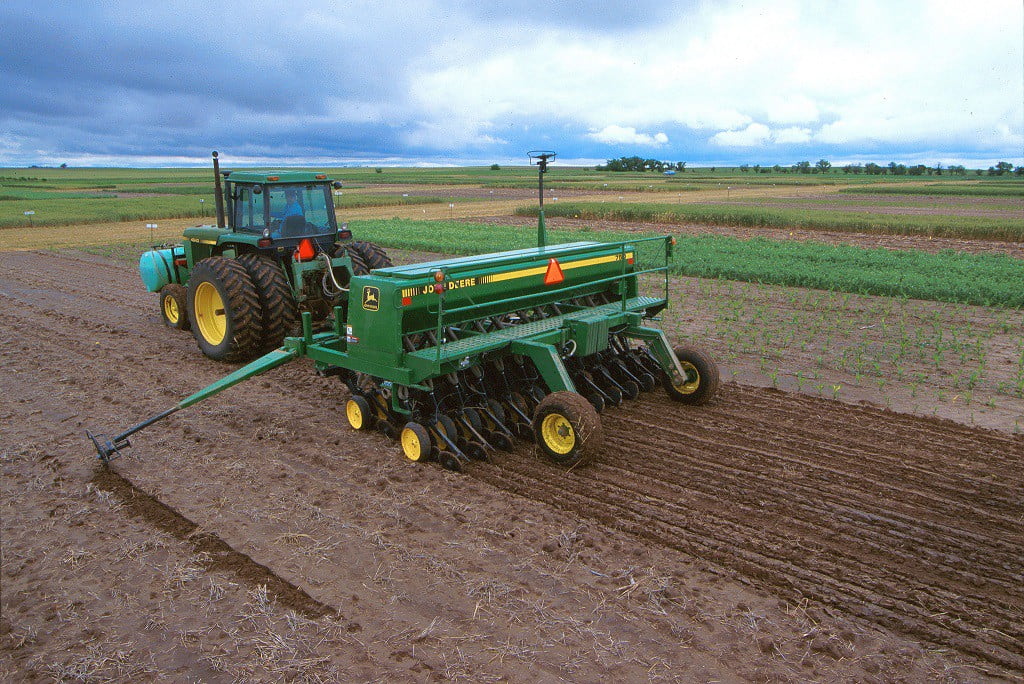The Occupational Safety and Health Administration (OSHA) issued a Machine Guarding Standard for Agriculture. The purpose of the standard is to protect all agricultural workers from hazards associated with moving parts on farm field equipment and farmstead equipment used in agricultural operations.
The checklist below, provided by the Centers for Disease Control and Prevention (CDC) covers regulations issued by OSHA under the agricultural standard 29 CFR 1928.57. It applies to hazards associated with moving machinery parts of farm field equipment and farmstead equipment.
[hr_invisible]
General Guidelines for Guarding Farm Equipment |
Have operating instructions been provided at the time of initial assignment and at least annually thereafter to all who come in contact with covered equipment? Do instructions discuss the safe operation and servicing of all farm equipment and include at least the following practices?
|
Have all workers been protected against contact with the hazards created by moving machine parts by either of the following methods?
|
| When guards are used to provide protection required by this section, are they designed and located to protect against contact with the hazard being guarded? |
| Unless otherwise specified, is each guard and its support capable of withstanding the force that a 250-pound person, leaning on or falling against the guard, would exert on that guard? |
| Are all guards free from burrs, sharp edges and sharp corners, and securely fastened to the equipment or building? |
| Whenever a moving machinery part presents a hazard during servicing or maintenance, is the engine stopped, the power source disconnected, and all machine movement stopped before servicing or maintenance is performed? Note: Exceptions to this requirement are as follows:
|
Farm Field Equipment |
| Are all power take-off shafts, including rear-, mid- and side- mounted shafts, guarded either by a master shield or by other protective guarding? |
| Are all tractors equipped with an agricultural tractor master shield on the rear power take-off, except when the design of the power take-off driven equipment requires removal of the shield? |
| Does the master shield have sufficient strength to prevent permanent deformation of the shield when a 250-pound operator mounts or dismounts the tractor using the shield as a step? |
| Is power take-off-driven equipment guarded to protect against employee contact with positively driven rotating members of the power-drive system, including the portion of the tractor power take-off shaft that protrudes from the tractor if the master shield is removed? |
| Do signs placed at prominent locations on tractors and power take-off-driven equipment specify that power take-off-driven system safety shields must be kept in place? |
| Is the mesh or nip points of all power-driven gears, belts, chains, sheaves, pulleys, sprockets and idlers guarded? |
| Are all revolving shafts, including projections such as bolts, keys or set screws guarded, except smooth shaft ends protruding less than one-half the outside diameter of the shaft and its locking means? |
| Are ground-driven components guarded? |
| Are the following components, which must be exposed for proper function, guarded as much as possible in a manner that will not interfere with normal functioning of the component? Choppers, snapping or husking rolls, straw spreaders and choppers, cutterbars, flail rotors, rotary beaters, mixing augers, feed rolls, conveying augers, rotary tillers, rotary beaters, mixing augers, feed rolls, conveying augers, grain spreaders, stirring augers, sweep augers and feed augers. |
| Are guards, shields and access doors in place when equipment is in operation? |
If removal of a guard or access door will expose a person to any component that continues to rotate after the power is disengaged, has the employer provided, in the immediate area, the following?
|
Farmstead Equipment |
| Are all power take-off shafts, including rear-, mid- and side-mounted shafts, guarded either by a master shield or other protective guarding? |
| Is power take-off-driven equipment guarded to protect against contact with positively driven rotating members of the power-drive system? |
| If power take-off-driven equipment is of a design requiring removal of the tractor master shield, does the equipment also include protection for that portion of the tractor take-off shaft that protrudes from the tractor? |
| Are signs placed at prominent locations on power take-off-driven equipment specifying that power-driven system safety shields must be kept in place? |
| Are all revolving shafts, including projections such as bolts, keys and set screws, guarded? |
| Are sweep-arm material-gathering mechanisms used on top surfaces of materials within silo structures guarded? |
| Is the lower or leading edge of the guard located no more than 12 inches above the material surface and no less than 6 inches in front of the leading edge of a rotating member of the gathering mechanism? |
| Is the guard parallel to, and extended to the fullest practical length of, the material-gathering mechanism? |
Is exposed auger flighting on portable grain augers guarded with either grating type guards or solid baffle-style covers as follows?
|
| Are guards, shields and access doors in place when the equipment is in operation? |
Is the application of electrical power from a location not under the immediate and exclusive control of the person maintaining or servicing the equipment prevented by one of the following methods?
|
Are all circuit protection devices (including those that are an integral part of a motor) of the manual reset type, except in the following cases?
|
[hr]
Definitions
Farm field equipment: tractors, implements (including self-propelled implements), or any combination thereof used in agricultural operations.
Farmstead equipment: agricultural equipment normally used in a stationary manner. This includes materials handling equipment and accessories for such equipment, whether or not the equipment is an integral part of a building.
Guarding by location: a situation when, because of its location, no employee can come into contact with a hazard during operation, maintenance, or servicing.
Source: Centers for Disease Control and Prevention (CDC)

